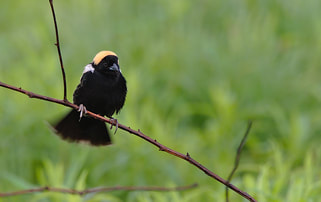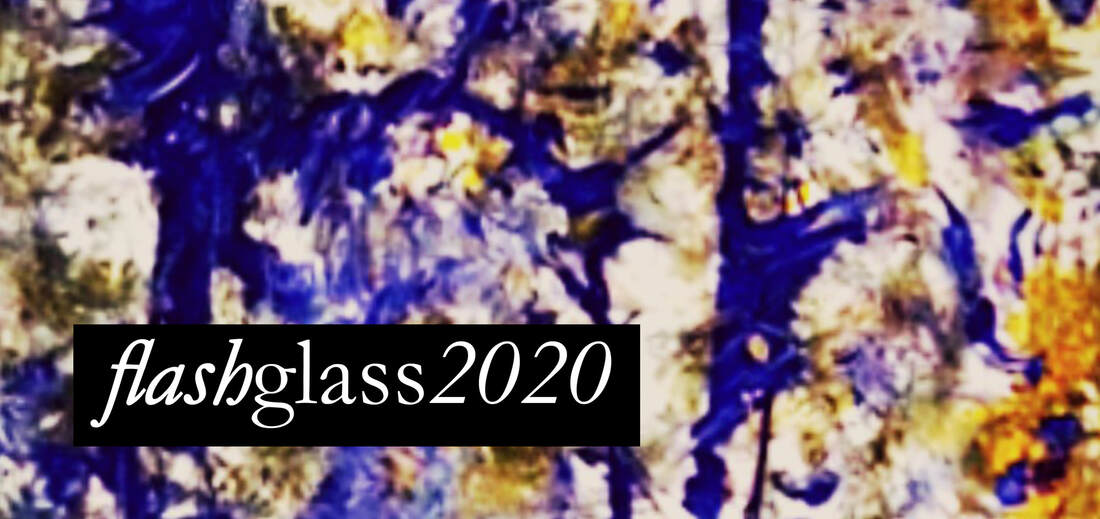 Spring means warbler migration. I change out the marimba CD in my car for an auditory field guide. I memorize the intro track, the narrator’s perky voice that I can’t believe belongs to a real man. I attend lectures about bicycle Big Years and song variation of veery across Appalachia. I read the Peterjohn guide to Ohio breeding birds and dog-ear pages for rare warblers. Birdsongs are like languages. They identify. They project. They entice. Birds use song to draw the borders of their territory, to warn of predators, to boast about their fitness to prospective mates. Birdsong adapts. Near highways, chickadees adapt their voices to sing above the noise. Some birds are given unique names by their parents. They sing their names to prospective mates and build whole family lines based on these names. Song defines species, and many good birders know the key to identification isn’t field marks and habitats, but song. In some species, the song is innate. For others song is learned, practiced, copied. In the catacombs of YouTube, I find hours of birdsong, recorded so that captive birds can learn to sing. And of course, there are the infamous mimics—thrashers and mockingbirds—which learn the songs of other birds and sometimes deceive even the most experienced of birders. Like a mockingbird, I spend hours listening and then trying to mimic the calls of warblers and owls. I learn through imitation. The simpler songs are often easiest to pair with mnemonics. Cardinals say “cheer, cheer” and goldfinches frantically repeat their “potato-chip” wherever they fly. Other calls are easy to learn because they are so spectacular. The bobolink has this kind of song. Bobolink song is complex and meandering, hard to process, but spring mornings and all summer long, bobs call out their unique name above the prairie as they have done for hundreds of years. Every community of bobolinks looks the same. The males are black with vanilla caps and white shoulders. Females and young birds are chestnut and brown, sparrow-like, with light eye lines and honeyed chests. Females are attracted by color and flight, but mostly by song. Male Bobs learn their songs from their community. This means that, although apparently the same, each population of bobs sings a slightly different version of the same song. Other birds display this behavior. Certain populations of veery favor one song type over another. But veery song is simple, usually only four notes, and the differences in rhythm and pattern are obvious once I know to listen for them. I begin to refer to some birds by their calls instead of their names. Carolina wren becomes tea-kettler. White-throated sparrow is poor-Sam-Peabody. I listen to recordings of bobolinks and compare them to my local flock. I like to imagine I could pick out one of my birds in their winter territory just by the unique cadence of his song. And that maybe they can recognize me, too. Christina Stump is a recent graduate of Bowling Green State University’s MFA program. She writes about nature and place-making, especially through the lens of speculative fiction and creative nonfiction. When not writing, Christina can be found in Ohio’s wetlands and forests, looking (and listening) for her nemesis: the Swainson’s Warbler.
0 Comments
Leave a Reply. |
FLASH GLASS: A MONTHLY PUBLICATION OF FLASH FICTION, PROSE POETRY, & MICRO ESSAYS
Categories
All
COVER IMAGe:"Ice Crystals"
|
|
Glassworks is a publication of Rowan University's Master of Arts in Writing 260 Victoria Street • Glassboro, New Jersey 08028 [email protected] |
All Content on this Site (c) 2024 Glassworks
|


 RSS Feed
RSS Feed
